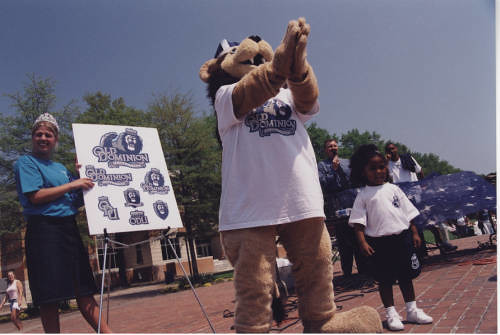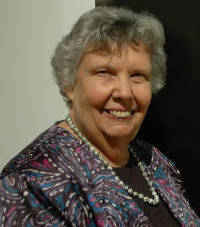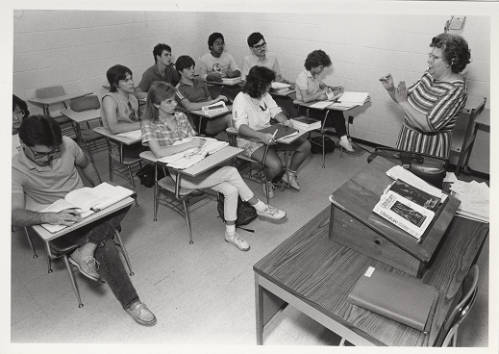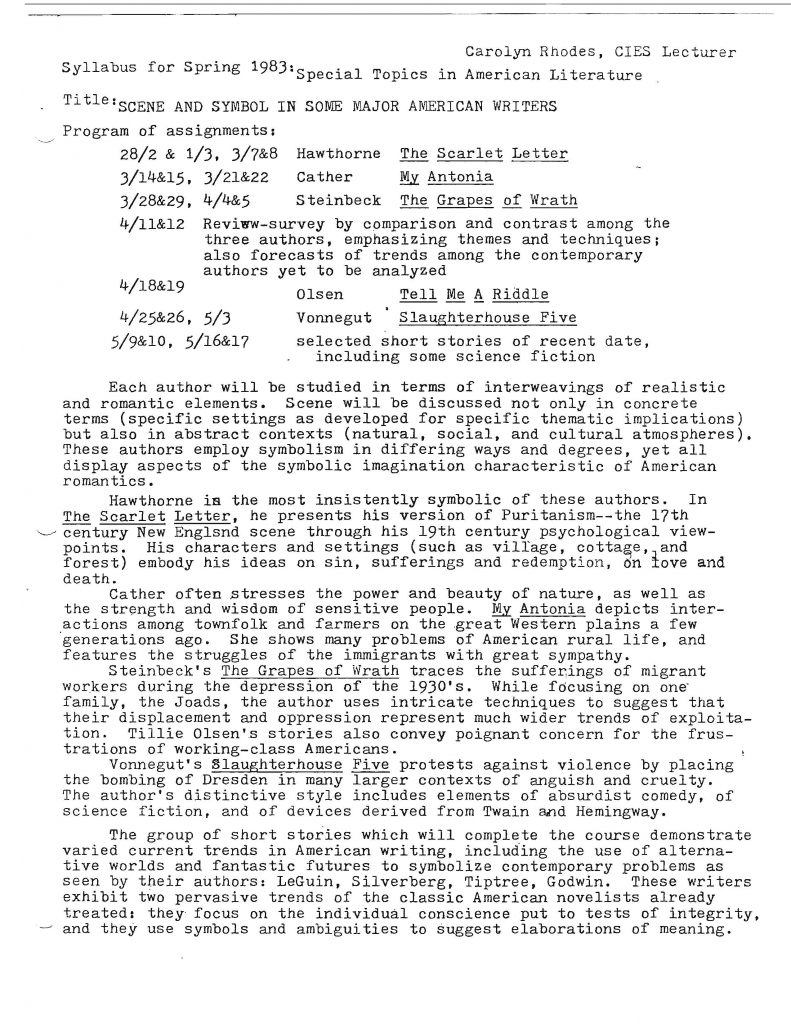By Special Collections and HIST 368 Intern, David Morgan
Ever since high school, I have been interested in aerospace history. I was in the Hunch Club at Denbigh High School which provided me with the opportunity to work on refurbishing a Concorde test model that was used in one of the wind tunnels at NASA Langley. Learning about the history of the model and the wind tunnel tests that were done at NASA Langley had me hooked on aerospace history. This passion led me to pursue a history minor and find internships that matched my interests, which is how I stumbled into the Old Dominion University Special Collections and University Archives. In autumn of 2023, I began working on my project in Special Collections – to inventory and research the Robert Ash Collection, which deals with the partnership between the ODU Department of Engineering and NASA Langley.
The Tunnel’s History
During ODU’s time at NASA Langley, they predominantly tested in NASA’s Historic 30- by 60-Foot Tunnel, also known as the Langley Full-Scale Tunnel (LFST). The wind tunnel began operations in 1931, remained the world’s largest operational wind tunnel until 1945, and was the oldest operating wind tunnel until its closure in ‘95. It was designed to test full-scale aircraft at low speeds between 25 and 180 mph. The tunnel saw many historic aerospace engineers and entrepreneurs come and go, such as Orville Wright, Leroy Grumman, and Charles Lindbergh. Various aerospace vehicles were tested there, including World War II piston aircraft, submarines, lunar space capsules, and modern jet and rotary aircraft (commercial and military). The Langley Full-Scale Tunnel made it on the National Register of Historic Places in 1985 and was endowed as a national landmark by the National Park Service. Due to budget cuts in 1995, the wind tunnel was closed and received a new lease on life.
The NASA-ODU Connection
In 1995, ODU pursued additional avenues to broaden the horizons of its mechanical and aerospace engineering departments, aiming to elevate its public profile as well as raise money to support faculty research and engineering graduate students. They identified the Langley Full-Scale Tunnel as a strategic opportunity, leveraging it not only to extend the wind tunnel’s lifespan but also to improve the University’s standing and give engineering students aerospace research opportunities. The project was a brainchild of Dr. Ernest Jim Cross, professor and former Dean of the College of Engineering and Aerospace Department. Additionally, it received substantial support from engineering faculty and Research and Academic Programs facilitator, Colin Britcher, as well as Drew Landman, chief engineer of the tunnel. Britcher worked with Drew Landman to identify research and tunnel test opportunities, direct marketing for wind tunnel engineering and testing, and promote and create educational programs. An agreement was reached where NASA would allow ODU to complete operations for ten years rent-free. With this agreement came ODU’s new responsibility to keep up safety checks, maintain the tunnel’s smooth operations, and pay costs for running the wind tunnel. NASA provided engineers to assist with operations and 1999 marked the first full year of operations for the College of Engineering and Technology at Old Dominion University.
Tests, Achievements, and Partnerships
During its tenure at NASA Langley, Old Dominion University engaged in a wide range of research collaborations encompassing automotive, aeronautical, aerospace, and structural testing. ODU conducted groundbreaking vehicle testing through collaboration with NASA, the Air Force, Navy, defense industry leaders like McDonnell Douglas and Boeing, renowned entities such as NASCAR, Formula One, Volvo, the American Motorcycle Association, and universities like Virginia Tech and Georgia Tech. They assessed full-scale aircraft like the Cessna, Boeing X-48 Wing Body, conducted aerodynamic test for military jets including the F-15 and F-18, tractor trailers, and ventured into unique projects such as solar car evaluations, structural durability testing for companies like Rubbermaid, as well as tested a replica of the Wright Flyer. These collaborations showcased ODU’s versatility, innovation, and impact across industries.
The Langley Full-Scale Tunnel held a unique position as one of the four commercial full-scale wind tunnels in North America. Notably, it stood as the largest university-owned wind tunnel at that time and distinguished itself by offering affordability, charging only $1,400 per hour compared to the average $2,400 in other facilities. This competitive pricing, coupled with its strategic proximity to numerous raceways, drew the attention of racing teams, universities, aerospace and automotive companies from across the country. Its accessibility and cost-effectiveness made it a magnet for testing various designs and fostering collaborations and innovations across multiple industries. From the tunnel’s growing popularity in the industry it had been featured on prominent newspapers and magazines including but not limited to the Wall Street Journal, Air and Space Magazine by the Smithsonian, the Daily Press, and Racar Engineering Magazine. The ODU LFST has had many noteworthy accomplishments including research grants and awards, successful experiments that led to automotive and aviation improvements, to even making their own newsletter. These achievements helped the organization branch out, attain collegiate and private partnerships, and become recognized by former governor and now senator Mark Warner.
Notable inventions from the Tunnel:
- Modular Car Balance -to test cars and trucks
- Balance for tractor trailers-modified full scale aircraft balance could hold up to five trucks
- Developed a new capability to measure aerodynamic forces on heavy trucks
The Wind Tunnel and Academics
The LFST established an academic program at ODU in 1995- Master of Engineering in Experimental Methods. This program was expected to be the primary source of graduate students for the Graduate Assistant positions at the tunnel, with a specialization in the area of aerodynamics and structural dynamics or controls. The roles of the Graduate Assistants included: operations, facility development, and research. Civil, electrical, computer, and mechanical engineering majors participated in the LFST program. There were also Undergraduate Co-op and paid internship opportunities for students.
Another program between Old Dominion/NASA Langley that started in 2000 and lasted over five years, was the graduate-level degree curriculum in experimental aerodynamics, which established a center for experimental aerodynamics. The planned educational program spanned from master’s, bachelor’s and associate’s degrees and had various engineering programs to choose from. The primary programs were the automotive and aerospace engineering research programs. LFST operation was the development of the highest level of in-house expertise in wind tunnel design and test techniques, with highly focused professional development courses offered by the LFST staff. A few examples of these courses are:
Example Courses:
- Wind Tunnel design and test techniques
- Experimental measurement techniques
- Automotive aerodynamics
- Experimental and computational aeroacoustics
- Vehicle vibration and dynamics
- Experimental design and Uncertainty analysis In addition, students from the engineering clubs such as ODU Motorsports tested their vehicles at NASA Langley wind tunnel as well as on the Langley raceway. ODU had a plan to expand the Motorsports and automotive program on the grounds of NASA Langley.
The Program’s Closure and Legacy
ODU’s academic program ended because of the tunnel’s closure and demolition, which was due to on-site deterioration, a lack of repair funding, and the nonr-enewal of the NASA-ODU contract. In 2009, the last test was done for the Boeing X-48, the tunnel was completely shut down in 2010, and demolition was completed in 2011. Despite this, the legacy of the program lives on, particularly in its groundbreaking work in aerospace engineering. A fan from the tunnel now stands as a testament to its innovative contributions to mechanical and aerospace engineering at the Smithsonian Air and Space Museum in Washington. At Old Dominion University, the program’s research endures, showcased in the form of tested semi-truck and airplane models housed in the engineering building. ODU’s ongoing partnership with NASA remains robust, featuring guest speakers, facility tours for students, and educational programs like VASTS, offering high schoolers the chance to collaborate with NASA. Faculty at ODU continue their collaborative projects with NASA Langley, fostering research opportunities, while academic internships allow students to gain hands-on experience, ensuring the program’s impact persists despite its closure.






















